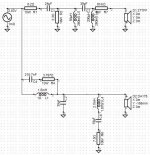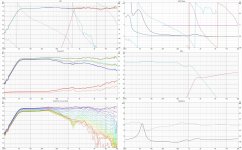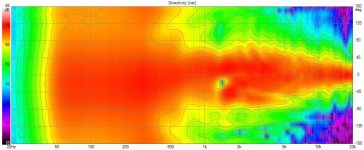What mic to buy?
Buy Fiat
Backup devices are Sonarworks XREF 20 and Scarlett 2i2. But reputation of Focusrite is not the best. Some users have strange problems especially with ARTA in dual channel mode. Maybe some issues with D.C. offset or cross-feed between channels. My 2i2 2nd gen works okay, but that does not guarantee that the others would be okay too.
Last edited:
So many interesting eyeopening things happened with me after spending 2 hours reading the manual
The next question is what's better BMW or Audi? Ups, not here, sorry. What mic to buy?
For what its worth from one newbie. I am in the same situation and been jumping around a lot of forums etc regarding speaker measuring. There are loads of mics out there. But it seem to be not that many if you look at a fairly cheap but still ok mic with correction file. From what I have found Dayton Audio EMM-6 and Line Audio OM1 seem to be candidates. Also there are a Behringer ECM8000 which is cheaper and has very good reviews (even compared with more expensive mics) but doesn’t seem to come with a calibration file.
The same with the two channel interconnect you need. Lots of them but not so many in a “newbie price range”. Steinberg UR22MK2, Focusrite Scarlett Solo or 2i2 seem to be popular.
That's right. You can't design/simulate horns, wave ...........There will always be radiator types which are not yet invented, but main program should and will support them.
Merger tool is simplified at the moment so that all LF radiators use the same baffle effect response. Directivity at LF is based on far field measurements so rear port signal will be strongest to back also in merged responses.
Thanks Kimmo.
For exploration of the MLTL I am about to design from all aspects I use Hornresp which is great. It can handle “whatever” type of enclosure and return spl, impedance, phase, delay, port velocity etc. I have got designs compared in Hornresp with the famous MathCad and they return very similar result. My newbie thoughts is that the output from a 2 way MLTL could be seen as a base reflex enclosure. Both are vented enclosures.
So if that true in some way, the “only” thing is that the port is on the back baffle. In 2pi or 4pi measurements I guess it has affect versus a room position even if LF are spreading quite well. Maybe that’s why +/-180 degrees measuring is sooo important and solve the “problem”’or at least to a major extent. At least I am trying to get some kind of a grip of it.....
Member
Joined 2003
I use Steinberg UR22mkii, highly recommend. I used to have a rev1 2i2, had driver issues with it and the knobs tended to stick which made fine adjustment difficult. There's a new UR22c available now with USB C connector and 32bit capability, not that we really need more bits.
The cheapest option for a USB interface is Behringer UMC202HD.
For mics there are many options. I have Dayton EMM-6, but the calibration they provide is not very good, it's very noisy mess, it might be okay if you take that calibration and smooth the heck out of it. I built my own calibration using my Omnimic which I trust enough. I guess you get what you pay for.
There's lots of other options though. Beyerdynamic MM1, Rational Acoustics, Audix TM1Plus, Earthworks has several options, NTI has several options, B&K, Audiomatica Clio mic, Neumann MA 1,
The cheapest option for a USB interface is Behringer UMC202HD.
For mics there are many options. I have Dayton EMM-6, but the calibration they provide is not very good, it's very noisy mess, it might be okay if you take that calibration and smooth the heck out of it. I built my own calibration using my Omnimic which I trust enough. I guess you get what you pay for.
There's lots of other options though. Beyerdynamic MM1, Rational Acoustics, Audix TM1Plus, Earthworks has several options, NTI has several options, B&K, Audiomatica Clio mic, Neumann MA 1,
I use Steinberg UR22mkii, highly recommend. I used to have a rev1 2i2, had driver issues with it and the knobs tended to stick which made fine adjustment difficult. There's a new UR22c available now with USB C connector and 32bit capability, not that we really need more bits.
,
Anyone have any experience with the Roland Rubix22?
I might pick up a Roland Rubix22 or the Steinberg UR22C to see if it works better than my Scarlett Solo. I want to see if the DC offset problem I am having is the interface or something else.
Member
Joined 2003
I am using ECM8000 (Cross Spectrum calibrated).
The soundcard is Scarlett 2i2 1st generation, without issues (knock on wood!).
Looks like the current best value for money would be Behringer UMC204HD - ARTA and USB interface
This MOTU M4 is more expensive but is highly regarded - Motu M4 Audio Interface Review | Audio Science Review (ASR) Forum
The Roland Rubix22 seems OK.
The soundcard is Scarlett 2i2 1st generation, without issues (knock on wood!).
Looks like the current best value for money would be Behringer UMC204HD - ARTA and USB interface
This MOTU M4 is more expensive but is highly regarded - Motu M4 Audio Interface Review | Audio Science Review (ASR) Forum
The Roland Rubix22 seems OK.
Question!
So i take a driver in Vituix....start moving a driver up and down on the Y axis....it does look I think it should on the polar chart....could someone explain? I get hot spots up at 20khz by moving my tweeter up or down 355mm...hows that logical? the ceiling to floor is near 2200mm or so.
So i take a driver in Vituix....start moving a driver up and down on the Y axis....it does look I think it should on the polar chart....could someone explain? I get hot spots up at 20khz by moving my tweeter up or down 355mm...hows that logical? the ceiling to floor is near 2200mm or so.
Thank youNow I can buy EMM-6 Electret Measurement Microphone -any good?
I would not buy EMM-6 or ECM8000. Calibration of EMM-6 was stepped freq zig-zag and ECM8000s have high variation, unreliability and calibration depend on supplier (IsemCon better than Cross Spectum as fas as I remember). Individual could be total crap without calibration.
Question!
So i take a driver in Vituix....start moving a driver up and down on the Y axis....it does look I think it should on the polar chart....could someone explain? I get hot spots up at 20khz by moving my tweeter up or down 355mm...hows that logical? the ceiling to floor is near 2200mm or so.
Impossible to say much without accurate and full information about response data and settings of directivity chart.
One possible problem related to .NET engine is curve method having graphical interpolation. Curve method could draw sharp extra spike if there is very fast change/discontinuity in data. Comparing to some other chart type usually reveals this incident.
I can recommend EMM-6 Cross Spectrum Labs for frequency response measurements and Focusrite 2i2. I went with CSL as I did not trust factory calibrations.
EMM-6 CSL had very good match with Earthworks M23, I tested that recently. Though it is not good for distortion measurement, HD2 is totally wrong, and higher components are not totally wrong, just elevated few dBs.
EMM-6 CSL had very good match with Earthworks M23, I tested that recently. Though it is not good for distortion measurement, HD2 is totally wrong, and higher components are not totally wrong, just elevated few dBs.
yes, line audio om1 should be a very good choice, it is tuned to measure flat on axis so it measures +/-1db as is. it uses a larger mic capsule so it is not trully omnidirectional and should therefor be aimed directly to the speaker under test, the larger capsule should also handle higher spl's better
There's lots of other options though. Beyerdynamic MM1, Rational Acoustics, Audix TM1Plus, Earthworks has several options, NTI has several options, B&K, Audiomatica Clio mic, Neumann MA 1,
It´s not that there are no options.
It´s quite the opposite. Lots of them, in all price ranges.
Steinberg UR22 mk2 and Line Audio OM1 seem to be, if I try to conclude discussions here and lots of other threads, safe choices as step in models for a two channel set up.
I would not buy EMM-6 or ECM8000. Calibration of EMM-6 was stepped freq zig-zag and ECM8000s have high variation, unreliability and calibration depend on supplier (IsemCon better than Cross Spectum as fas as I remember). Individual could be total crap without calibration.
Kimmo, any details regarding issues with Cross Spectrum? I bought my ECM8000 from them! (before the current quality issues with the Behringer)
I would not buy EMM-6 or ECM8000. Calibration of EMM-6 was stepped freq zig-zag and ECM8000s have high variation, unreliability and calibration depend on supplier (IsemCon better than Cross Spectum as fas as I remember). Individual could be total crap without calibration.
Ups! Life is full of surprises... But I noticed with the mic you recommended has other software(pricey) for sale and I was a bit scared to buy an "empty" device.
Kimmo, any details regarding issues with Cross Spectrum? I bought my ECM8000 from them! (before the current quality issues with the Behringer)
My calibration studies happened in September 2012. Significant improvements could happen in 8 years.
Unfortunately I don't have original calibration files for ECM8000s by CSL. I had two of those. Just e-mail discussion with comments that both LF and HF of CSL were not equal to Audiomatica MIC-01 and ECM8000 by IsemCon. Those two were quite exact match at HF, but LF has uncertainties due to non-linearities in measurement signal. I don't own the truth so I just picked with statistics; experience from majority with compatible features.
I would probably try Earthworks M30. Limited spectrum of mic could be quite nasty with VCAD which likes to extrapolate up to 40 kHz.
Last edited:
Hello Kimmo,
Is this the sort of response you were describing to get a smooth power response, where one of the drivers is out of phase at the XO?



Would the small hole in the response have been possible to eliminate with a woofer with different properties (what would those properties have been?) as well as different driver spacing (~1.4x XO freq)?
Also, would it be possible to get a couple of sentences about your thoughts on the use of waveguides on tweeters in two way designs (good/bad?) similar to what I am doing?
Thank you,
David.
Is this the sort of response you were describing to get a smooth power response, where one of the drivers is out of phase at the XO?



Would the small hole in the response have been possible to eliminate with a woofer with different properties (what would those properties have been?) as well as different driver spacing (~1.4x XO freq)?
Also, would it be possible to get a couple of sentences about your thoughts on the use of waveguides on tweeters in two way designs (good/bad?) similar to what I am doing?
Thank you,
David.
Last edited:
- Home
- Design & Build
- Software Tools
- VituixCAD